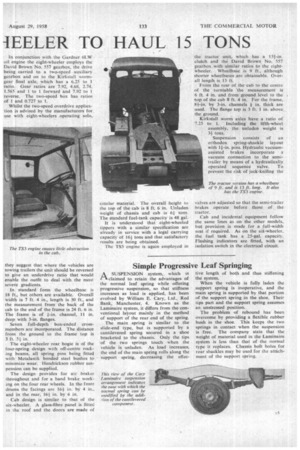Simple Progressive Leaf Springing
Page 39

If you've noticed an error in this article please click here to report it so we can fix it.
A SUSPENSION system, which is f-xclaimed to retain the advantages of the normal leaf spring while offering progressive suspension, so that stiffness increases as load is applied, has been evolved by William E. Cary, Ltd., Red Bank, Manchester, 4. Known as the Laminaire system, it differs from the conventional laYout mainly in the method of support of the rear end of the spring.
The main spring is similar to the slide-end type, but is supported by a cantilevered spring secured in a shoe bracketed to the chassis. Only the tips of the two springs touch when the vehicle is unladen. As load increases, the end of the main spring rolls along the support spring, decreasing the effec tive length of both and thus stiffening the system.
When the vehicle is fully laden the support spring is inoperative, and the main spring is supported by that portion of the support spring in the shoe. Their tips part and the support spring assumes an unstressed position.
The problem of rebound has been overcome by providing a flexible rubber bush in the shoe. This keeps the two springs in contact when the suspension is free. The company state that the weight of material used in the Laminaire system is less than that of the normal type it replaces. Chassis bolt boles for rear shackles may be used for the attachment of the support spring.




























































































